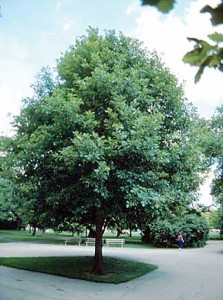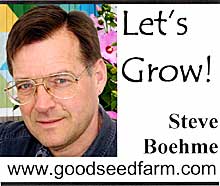
Next week’s column will be about how to get your money’s worth when shopping for trees. Then we’ll share planting tips, and finally we’ll answer frequently-asked questions about tree planting.
It can be frustrating to plant young trees because so many of us have had trees die after taking time, trouble and expense to plant them.
There are many reasons why this happens, some very technical but most quite simple.
It all starts with picking the right tree for the location you have.
The first question to ask yourself is “what is this tree for; why am I planting it?” Trees can be for shade, privacy, windbreak, or simply for decoration because they’re attractive.
The right tree can serve many of these purposes, but there are trade-offs between trees so you have to know which purpose is most important to you.
Next, figure out how tall and wide the tree can be when it’s fully grown. Do you have enough space for a big tree without overhanging your house, interfering with electric wires, or overcrowding other plants you already have? Imagine a big circle in your yard where you have room, with the tree at the center of the circle.
Measure the distance across the circle. Now you have important information and can limit your choices to trees that will fit the space.
Never plan on “trimming” or keeping trees smaller than God intended them to grow! There are plenty of trees that will fit the space you have when they are full grown.
Once you know what size tree you can fit, look at the growing conditions where it will live. Your tree can’t move if it doesn’t like the location. It’s stuck wherever you plant it.
You need to know whether the site is wet or dry, sheltered or exposed, and how good a soil you have. Some trees are more forgiving than others about drainage and soil conditions. The more you know, the better a choice you’ll make.
Once you know the size tree and what the growing conditions are, you can make the fun choices such as leaf and bloom color, shape, fall foliage color and so forth.
There may be trees you’ve always liked that will work, or perhaps you might choose something you never thought of because it would be such a good fit for your particular spot. A good way to think about it is that you are a “foster parent” and you will learn to love any tree you select, but you want to know that you can provide a good home.
You’ll be surprised how many choices there are if you talk to a knowledgeable nurseryman. Whether you wind up choosing the same tree your neighbors have or find something new and different, taking advantage of a nurseryman’s experience with real-life situations will save you money, time and sweat.
There are always exceptions, but it makes sense to follow time-tested rules when deciding on plants. You can avoid the pitfalls, save time and money, and enjoy a healthy tree for years to come. Look for this column next week for practical tips on selecting quality trees in the nursery and getting them home.
Steve Boehme is the owner of GoodSeed Nursery & Landscape, located on Old State Route 32 three miles west of Peebles. More information is available online at www.goodseedfarm.com or call (937) 587-7021.
